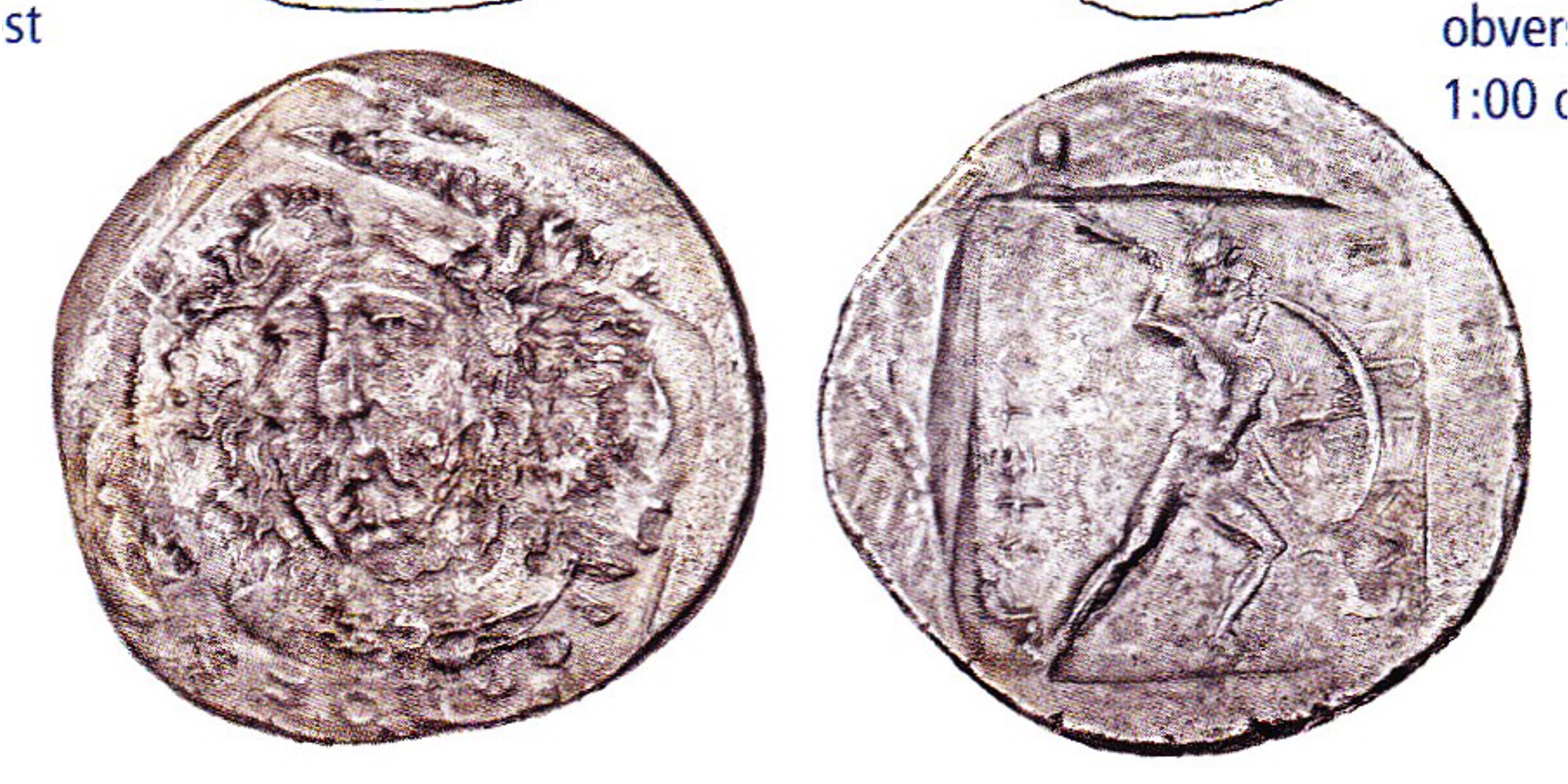380 BCE - 370 BCE | ΠΕΡΙΚΛΕ
Overstriking coin
Macdonald_coll., _160.jpg
Traces of the overstruck variety
Macdonald_coll., _160_(drawing).jpg
Description
| ObverseInscription or printing placed on the obverse.:
|
Bust of Perikles, three-quarters facing, draped and wearing a laurel wreath, in the field, a dolphin
|
ReverseInscription or printing placed on the reverse.:
|
ΠΕΡΙΚΛΕ (Lycian) Warrior, naked, bearded, wearing a helmet, brandishing a dagger and wearing a shield
|
Mint and issuing power
Chronology
| FromIdentifies the initial date in a range assigned in a numismatic context. 380 BCE toIdentifies the final date in a range assigned in a numismatic context.. 370 BCE
|
Classical 480-323 BC  periodTime period of the numismatic object. periodTime period of the numismatic object.
|
Physical description
MetalThe physical material (usually metal) from which an object is made.: Silver 
|
WeightWeight of the numismatic object (in grams). in grams: 9.869.86 g <br />9,860 mg <br />
|
DenominationTerm indicating the value of a numismatic object. Examples: tetradrachm, chalkous, denarius.: stater 
|
AxisDescribes the directional relationship between the obverse and reverse of a numismatic object.: 88 mm <br />0.8 cm <br />
|
|
|
|
References
Description
| ObverseInscription or printing placed on the obverse.:
|
A beaded exergue line and perhaps the rump and hind leg of a boar.
|
ReverseInscription or printing placed on the reverse.:
|
Branches of a triskeles or tetraskeles. Lykian legend, reading from top right to bottom and then across the bottom.
|
Mint and issuing power
Chronology
| FromIdentifies the initial date in a range assigned in a numismatic context. toIdentifies the final date in a range assigned in a numismatic context..
|
periodTime period of the numismatic object.
|
Physical description
References
References
- ^ Mildenberg, Leo (1965), "Mithrapata und Perikles", in Congresso Internazionale di Numismatica, Rome, 1961. Vol. 2: Atti, Rome, p. 45-55, pl. 3-4.

